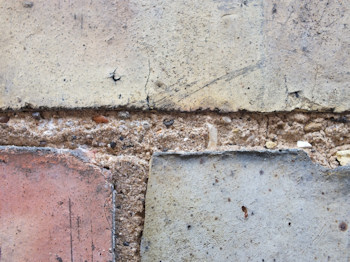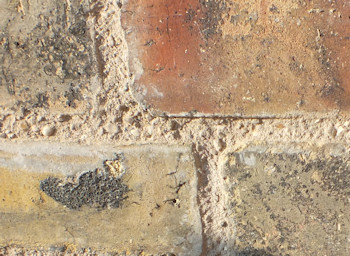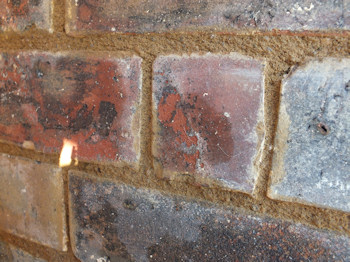malcolm
& Clementine the cat
- Messages
- 1,848
- Location
- Bedfordshire
A quick ask just in case I'm making a big mistake. Much of my pointing needs to be replaced after years of water damage from the weatherproof paint. I'm planning to re-point in lime (NHL 3.5) and sharp sand. Much of the re-pointing will be localised so I want to try to match the colour and texture of the existing. Some walls need re-pointing completely (125m2) and the colour matched pre-mix bags are prohibitive expensive for that sort of area so I want to find my own mix.
Back in the day (1910 to be exact) they would have used local sand and be done with it. Many local buildings of the period are pointed in a relatively fine yellow sand with some fairly angular white larger stones. The sharp sand I bought from Buildbase is more of a light brown colour and some of the larger stones are rounded not sharp. The small bit of test pointing I've tried so far looks too rough due to too much large aggregate. It would better match a Roman building.
My next test will be to mix the Buildbase sharp sand 1:1 with their plasterer's sharp sand which has a darker but warmer yellow tone. It should improve the colour and reduce the roughness.
Does any of that sound sensible? Short of finding the local sand pit and digging out a bit of original sand under the cover of darkness is there an easier way to find a matching sand?
Back in the day (1910 to be exact) they would have used local sand and be done with it. Many local buildings of the period are pointed in a relatively fine yellow sand with some fairly angular white larger stones. The sharp sand I bought from Buildbase is more of a light brown colour and some of the larger stones are rounded not sharp. The small bit of test pointing I've tried so far looks too rough due to too much large aggregate. It would better match a Roman building.
My next test will be to mix the Buildbase sharp sand 1:1 with their plasterer's sharp sand which has a darker but warmer yellow tone. It should improve the colour and reduce the roughness.
Does any of that sound sensible? Short of finding the local sand pit and digging out a bit of original sand under the cover of darkness is there an easier way to find a matching sand?



